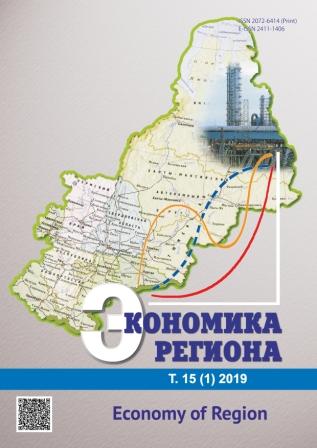How New Economic Geography Explains Provincial Wage Disparities: Generalised Methods of Moments Approach
How New Economic Geography Explains Provincial Wage Disparities: Generalised Methods of Moments Approach
Author(s): Hien Thanh Hoang, Linh T. D. Huynh, George S. ChenSubject(s): Economy, National Economy, Human Geography, Applied Geography, Socio-Economic Research
Published by: Институт экономики Уральского отделения Российской академии наук
Keywords: New economic geography;agglomeration economies;industrial linkages;market access;trade costs;wage equation;living costs;human capital;provincial panel data;generalised method of moments;Vietnam;
Summary/Abstract: In recent years, new and promising developments have made new economic geography (NEG) a popular framework for examining the spatial distribution of economic activity around the world. A major NEG prediction is that wages are higher in regions with a large market and easy access to suppliers of intermediate inputs. Based on this principle, we examine this hypothesis by using provincial data in Vietnam. Since the Doi Moi reform in 1986, the Vietnamese economy has successfully transformed from a centrally planned to a market-based economy. The Vietnamese experience has been seen as a valuable case study for other economies in transition. This paper estimates a structural model of NEG using Vietnamese provinces data for the period 2000 — 2012. Using instrumental variables based on the principle of generalised method of moments (GMM), we take account of potential endogeneity problem between regressors. We provide evidence that the industrial linkages and trade costs are statistically significant and quantitatively important in ex-plaining variation in provincial wages. This finding is robust to controlling for a wide range of considerations. Moreover, local governments need to strengthen human capital as the first step towards improving average wages. Indeed, a better education system is not only instrumental to raising average earnings per worker, but also crucial for minimizing income inequality in the long run.
Journal: Экономика региона
- Issue Year: 15/2019
- Issue No: 1
- Page Range: 205-215
- Page Count: 11
- Language: English

